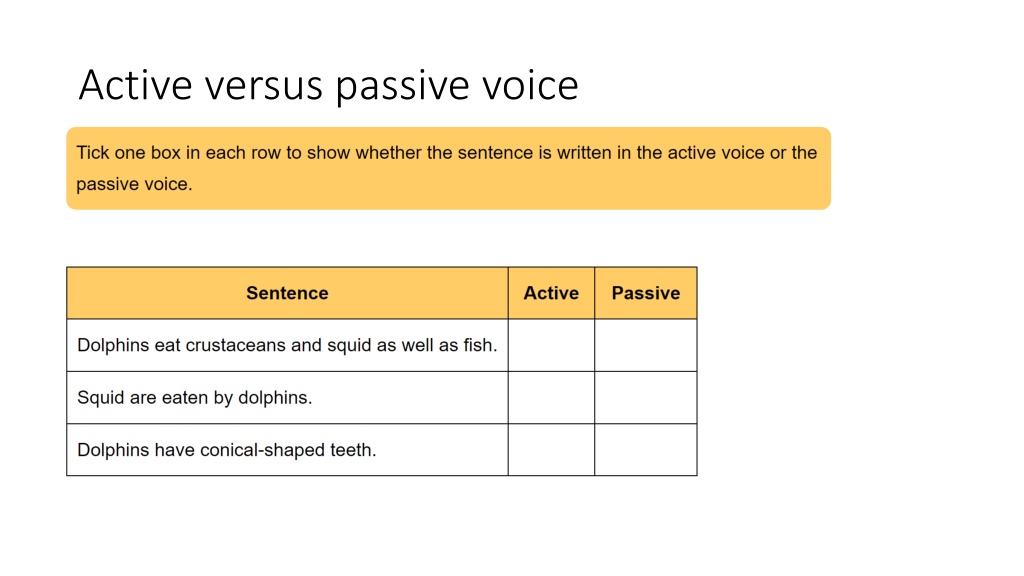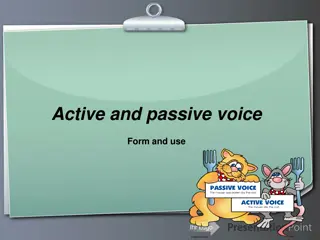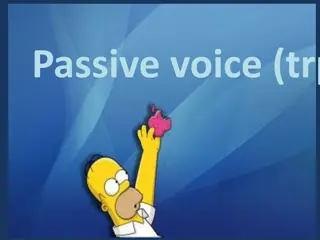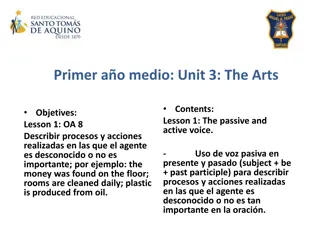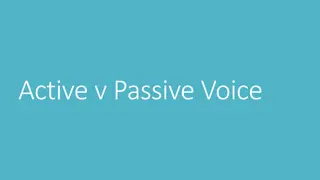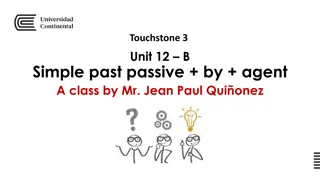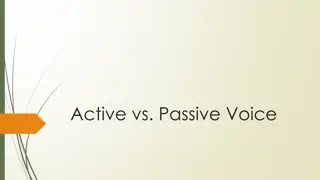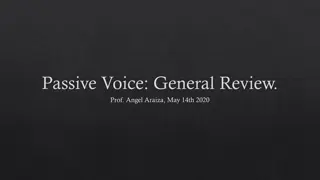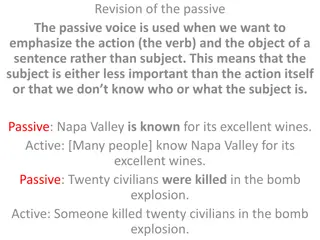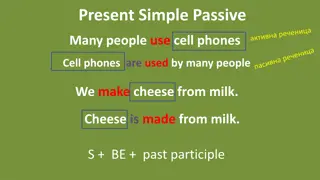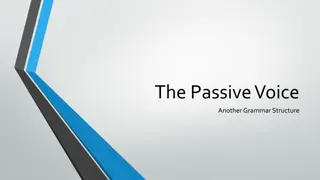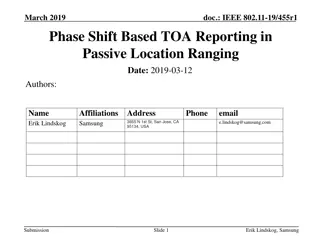Understanding Active and Passive Voice in English Grammar
Explore the difference between active and passive voice with examples and explanations. Learn how to identify subjects, verbs, and objects in sentences. Discover the characteristics of active and passive verbs, and how emphasis and formality can be affected by using either voice in writing.
Download Presentation

Please find below an Image/Link to download the presentation.
The content on the website is provided AS IS for your information and personal use only. It may not be sold, licensed, or shared on other websites without obtaining consent from the author. Download presentation by click this link. If you encounter any issues during the download, it is possible that the publisher has removed the file from their server.
E N D
Presentation Transcript
SUBJECT VERB OBJECT The teenager bounced the basketball. Subject = Verb = Object =
SUBJECT VERB OBJECT The teenager bounced the basketball. Subject = The teenager/ teenager Verb = bounced Object = the basketball /basketball
Subject, verb, object - write SVO next to them 1. Daniel laid the table. S V O 2. Marcia counted her chocolate coins. 3. My dad painted the fence. 4. The children picked flowers in the meadow. 5. The dog chewed his bone. 6. The baby ate the banana. 7. Mum baked some very tasty cakes. 8. Harry painted a picture.
Subject, verb, object - write SVO next to them 1. Daniel laid the table. S V O 2. Marcia counted her chocolate coins. S V O 3. My dad painted the fence. S V O 4. The children picked flowers in the meadow. S V O 5. The dog chewed his bone. S V O 6. The baby ate the banana. S V O 7. Mum baked some very tasty cakes. S V O 8. Harry painted a picture. S V O
What is an active verb? An active verb is where the subject carries out the action: The teenagerbounced the basketball.
What is a passive verb? The subject has the action done to it. So the subject undergoes the action of the verb (e.g. They were knighted as opposed to the active form He knighted them). They were knighted. is the passive voice They were knighted by the King. is also the passive voice. Active: The teenagerbounced the basketball. Tip: if you can add by zombies after the sentence, nine times out of ten it will be the passive voice. Passive: The basketball was bounced by the teenager. > This creates a change in emphasis. The passive voice is quite often used to show formality. The passive voice often has by in it, but does not have to.
Achieve 1.Change the active voice sentences below to passive voice: A. The burglar stole 5000. _________________________________________________________________________________ B. Tina sipped her cup of tea, contentedly. _________________________________________________________________________________ C. Stealthily, Mrs Cull broke out of the classroom. _________________________________________________________________________________ D. Danny scored the winning goal. _________________________________________________________________________________ E. Auntie Jen baked us a beautiful banana bread. _________________________________________________________________________________ 2. Now write five of your own sentences, each containing the passive voice. _________________________________________________________________________________ _________________________________________________________________________________ _________________________________________________________________________________ _________________________________________________________________________________ _________________________________________________________________________________
